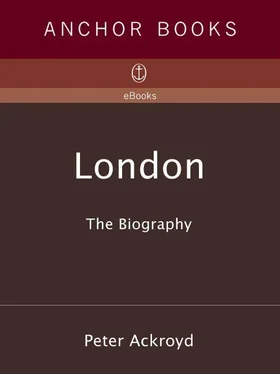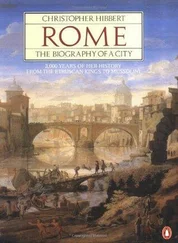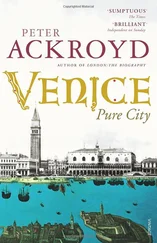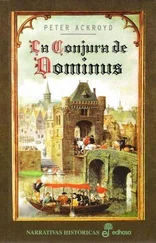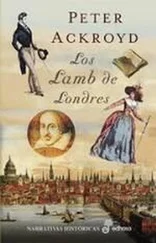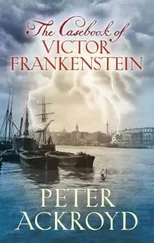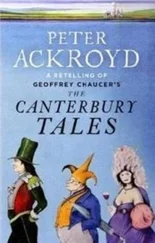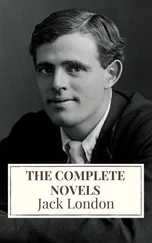Peter Ackroyd - London - The Biography
Здесь есть возможность читать онлайн «Peter Ackroyd - London - The Biography» весь текст электронной книги совершенно бесплатно (целиком полную версию без сокращений). В некоторых случаях можно слушать аудио, скачать через торрент в формате fb2 и присутствует краткое содержание. Год выпуска: 2000, ISBN: 2000, Жанр: Биографии и Мемуары, на английском языке. Описание произведения, (предисловие) а так же отзывы посетителей доступны на портале библиотеки ЛибКат.
- Название:London: The Biography
- Автор:
- Жанр:
- Год:2000
- ISBN:9781400075515
- Рейтинг книги:5 / 5. Голосов: 1
-
Избранное:Добавить в избранное
- Отзывы:
-
Ваша оценка:
- 100
- 1
- 2
- 3
- 4
- 5
London: The Biography: краткое содержание, описание и аннотация
Предлагаем к чтению аннотацию, описание, краткое содержание или предисловие (зависит от того, что написал сам автор книги «London: The Biography»). Если вы не нашли необходимую информацию о книге — напишите в комментариях, мы постараемся отыскать её.
London: The Biography — читать онлайн бесплатно полную книгу (весь текст) целиком
Ниже представлен текст книги, разбитый по страницам. Система сохранения места последней прочитанной страницы, позволяет с удобством читать онлайн бесплатно книгу «London: The Biography», без необходимости каждый раз заново искать на чём Вы остановились. Поставьте закладку, и сможете в любой момент перейти на страницу, на которой закончили чтение.
Интервал:
Закладка:
Another maze was to be found in the area once known as Tothill Fields in Westminster; it is depicted in Hollar’s view of the area in the mid-seventeenth century. Here also is a sacred spring, deriving from the “holy well” in Dean’s Yard, Westminster. A fair, similar to the pleasure gardens upon White Conduit Fields, was established here at an early date; the first extant reference is dated 1257.
The sites are, therefore, comparable. There are other suggestive coincidences. On old maps, “St. Hermit’s Hill” is a noticeable feature of the area beside Tothill Fields. To this day, there is a Hermes Street at the top of the Pentonville Road. It is perhaps also interesting that in a house on this site dwelled a physician who promoted a medicine known as the “Balsam of Life”; the house was later turned into an observatory.
On Tower Hill there was a spring of clear bubbling water, reputed to possess curative properties. A medieval well exists there, and traces of a Late Iron Age burial have been uncovered. There is no maze but the place has its own share of Celtic legends; according to the Welsh Triads the guardian head of Bran the Blessed is interred within the White Hill to safeguard the kingdom from its enemies. London’s legendary founder Brutus, also, was supposed to have been buried on Tower Hill, in sacred ground that was used as an observatory until the seventeenth century.
The etymology of Penton Hill and Tothill is reasonably certain. Pen is the Celtic signifier for head or hill, while ton is a variant of tor/tot/ twt/too , which means spring or rising ground. (Wycliffe applies the words tot or tote , for example, to Mount Zion.) Those of a more romantic disposition have suggested that tot is derived from the Egyptian god Thoth who is of course reincarnated in Hermes, the Greek personification of the wind or the music of the lyre.
Here, then, is the hypothesis: London mounds, which bear so many similar characteristics, are in fact the holy sites of Druid ritual. The maze is the sacred equivalent of the oak grove, while the wells and springs represent the worship of the god of the water. The London Water Board was, then, well situated. Pleasure gardens and fairs are more recent versions of those prehistoric festivals or meetings which were held upon the same ground. So antiquaries have named Tothill, Penton and Tower Hill as the holy places of London.
It is generally assumed, of course, that Pentonville is named after an eighteenth-century speculator, Henry Penton, who developed the area. Can one place assume different identities, existing in different times and in different visions of reality? Is it possible that both explanations of Pentonville are true simultaneously? Might Billingsgate be named after the Celtic king Belinus or Belin, as the great sixteenth-century antiquary John Stow would have it, or after a Mr. Beling, who once owned the land? Can Ludgate really bear the name of Lud, a Celtic god of the waters? Certainly there is room for contemplation here.
It is equally important to look for evidence of continuity. It is likely that there was antiquity of worship among the Britons long before the Druids emerged as the high priests of their culture, and in turn Celtic forms of ritual seem to have survived the Roman occupation and subsequent invasions by the Saxon tribes. In the records of St. Paul’s Cathedral the adjacent buildings are known as “Camera Dianae.” A fifteenth-century chronicler recalled a time when “London worships Diana,” the goddess of the hunt, which is at least one explanation for the strange annual ceremony that took place at St. Paul’s as late as the sixteenth century. There, in the Christian temple erected on the sacred site of Ludgate Hill, a stag’s head was impaled upon a spear and carried about the church; it was then received upon the steps of the church by priests wearing garlands of flowers upon their heads. So the pagan customs of London survived into recorded history, just as a latent paganism survived among the citizens themselves.
One other inheritance from prehistoric worship may also be considered. The sense of certain places as being powerful or venerable was taken over by the Christians in the recognition of “holy wells” and in such ceremonies of territorial piety as “beating the bounds.” Yet the same sensibility is to be found in the writings of the great London visionaries, from William Blake to Arthur Machen, writings in which the city itself is considered to be a sacred place with its own joyful and sorrowful mysteries.
In this Celtic period, which lurks like some chimera in the shadows of the known world, the great legends of London find their origin. The historical record knows only of warring tribes within a highly organised culture of some sophistication. They were not necessarily savage, in other words, and the Greek geographer Strabo describes one Briton, an ambassador, as well dressed, intelligent and agreeable. He spoke Greek with such fluency that “you would have thought he had been bred up in the lyceum.” This is the proper context for those narratives in which London is accorded the status of a principal city. Brutus, in legend the founder of the city, was buried within London’s walls. Locrinus kept his lover, Estrildis, in a secret chamber beneath the ground. Bladud, who practised sorcery, constructed a pair of wings with which to fly through the air of London; yet he fell against the roof of the Temple of Apollo situated in the very heart of the city, perhaps on Ludgate Hill itself. Another king, Dunvallo, who formulated the ancient laws of sanctuary, was buried beside a London temple. From this period, too, came the narratives of Lear and of Cymbeline. More powerful still is the legend of the giant Gremagot who by some strange alchemy was transformed into the twins Gog and Magog, who became tutelary spirits of London. It has often been suggested that each of this characteristically ferocious pair, whose statues have stood for many centuries within the Guildhall, guards one of the twin hills of London.
Such stories are recorded by John Milton in The History of Britain , published a little more than three hundred years ago. “After this, Brutus in a chosen place builds Troia nova , chang’d in time to Trinovantum , now London: and began to enact Laws; Heli beeing then high Priest in Judaea: and having govern’d the whole Ile 24 Years, dy’d, and was buried in his new Troy.” Brutus was the great-grandson of Aeneas who, some years after the fall of Troy, led the exodus of Trojans from Greece; in the course of his exilic wanderings he was granted a dream in which the goddess Diana spoke words of prophecy to him: an island far to the west, beyond the realm of Gaul, “fitts thy people”; you are to sail there, Brutus, and establish a city which will become another Troy. “And Kings be born of thee, whose dredded might shall aw the World, and Conquer Nations bold.” London is to maintain a world empire but, like ancient Troy, it may suffer some perilous burning. It is interesting that paintings of London’s Great Fire in 1666 make specific allusion to the fall of Troy. This is indeed the central myth of London’s origin which can be found in the sixth-century verses of “Tallisen,” where the British are celebrated as the living remnant of Troy, as well as in the later poetry of Edmund Spenser and of Alexander Pope. Pope, born in Plough Court beside Lombard Street, was of course invoking a visionary urban civilisation; yet it is one highly appropriate for a city first vouchsafed to Brutus in a dream.
The narrative of Brutus has been dismissed as mere fable and fanciful legend but, as Milton wrote in the judicious introduction to his own history, “oft-times relations heertofore accounted fabulous have bin after found to contain in them many foot-steps, and reliques of something true.” Some scholars believe that we can date the wanderings of the apparently legendary Brutus to the period around 1100 BC. In contemporary historiographical terms this marks the period of the Late Bronze Age when new bands or tribes of settlers occupied the area around London; they constructed large defensive enclosures and maintained an heroic life of mead-halls, ring-giving and furious fighting which found expression in later legends. Segmented glass beads, like those of Troy, have been discovered in England. In the waters of the Thames was found a black two-handled cup; its provenance lies in Asia Minor, with an approximate date of 900 BC. So there is some indication of trade between western Europe and the eastern Mediterranean, and there is every reason to suppose that Phrygian or later Phoenician merchants reached the shores of Albion and sailed into the market of London.
Читать дальшеИнтервал:
Закладка:
Похожие книги на «London: The Biography»
Представляем Вашему вниманию похожие книги на «London: The Biography» списком для выбора. Мы отобрали схожую по названию и смыслу литературу в надежде предоставить читателям больше вариантов отыскать новые, интересные, ещё непрочитанные произведения.
Обсуждение, отзывы о книге «London: The Biography» и просто собственные мнения читателей. Оставьте ваши комментарии, напишите, что Вы думаете о произведении, его смысле или главных героях. Укажите что конкретно понравилось, а что нет, и почему Вы так считаете.
